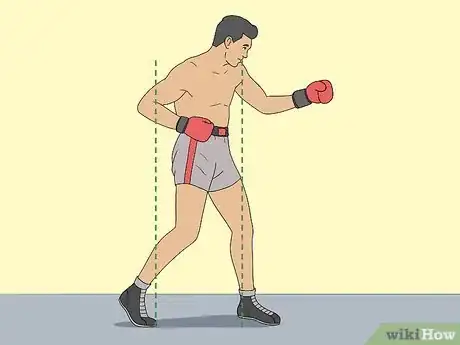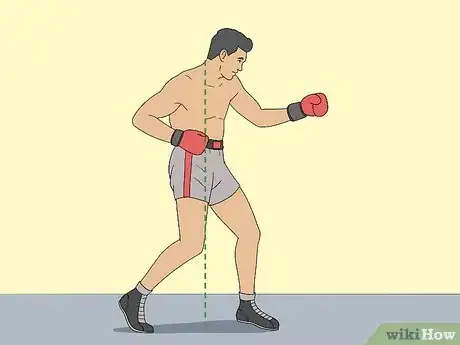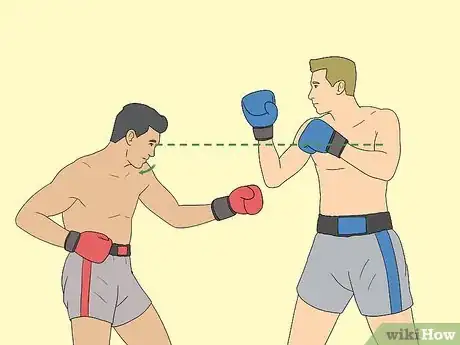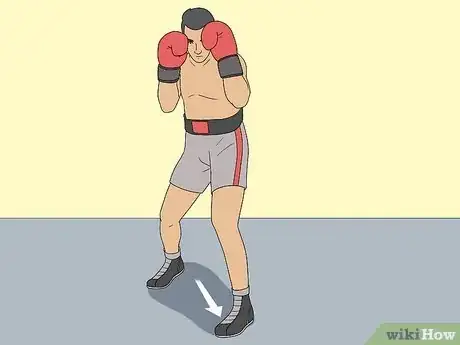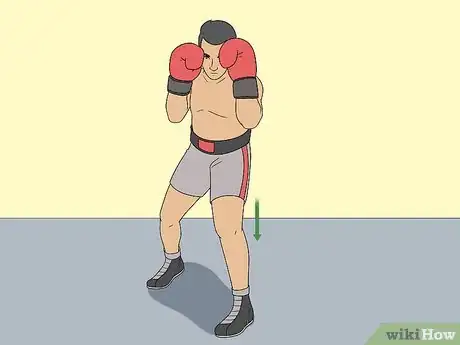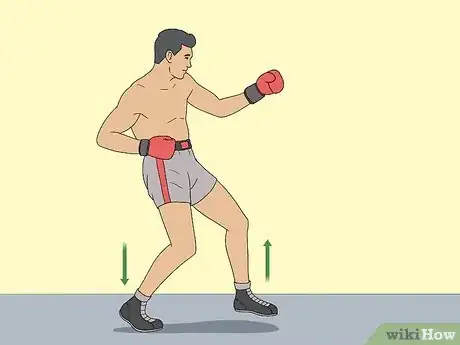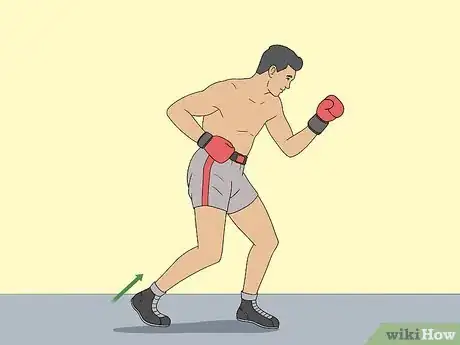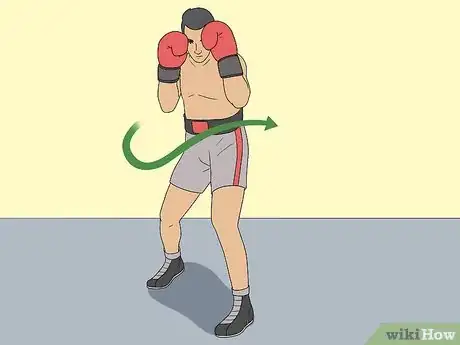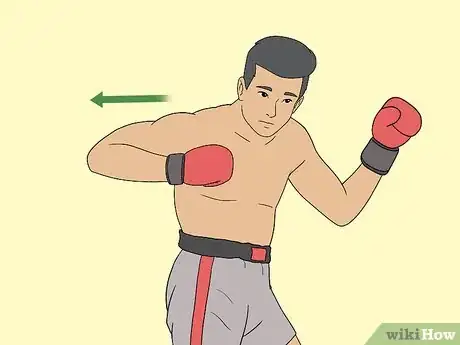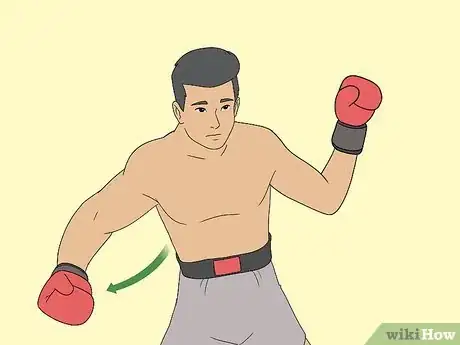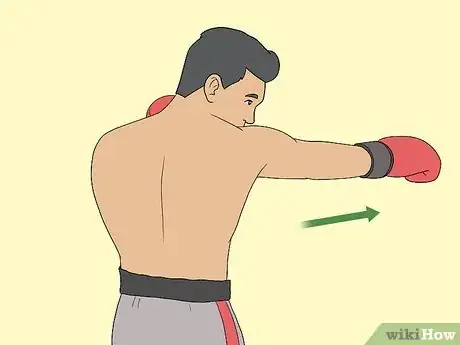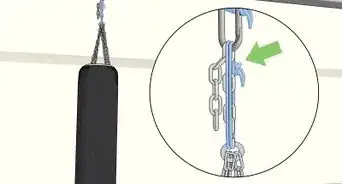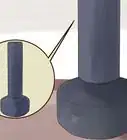This article was co-authored by wikiHow Staff. Our trained team of editors and researchers validate articles for accuracy and comprehensiveness. wikiHow's Content Management Team carefully monitors the work from our editorial staff to ensure that each article is backed by trusted research and meets our high quality standards.
This article has been viewed 26,680 times.
Learn more...
Jack Dempsey was the heavyweight boxing champion of the world from 1919-1926 known for his aggressive and dynamic fighting style. Although Dempsey was much smaller and had a shorter reach than many of his opponents, he was able to defeat the best fighters in the world with tenacity and technique. One of his techniques bears his name to this day: the Dempsey Roll. This combination of moves includes quick footwork, dynamic head movement, and Dempsey’s famous “Shoulder Whirl” to deliver devastating strikes. By understanding a few of Dempsey’s principles and with lots of practice, you can use his famous roll to close the distance on your opponents in the ring.
Steps
Getting into Position
-
1Space your feet out about 1½ times your shoulder width. Take a stance that is a little wider than your shoulder width so you have an even stronger base. Extend the foot of your non-dominant side in front of you and the foot of your dominant side behind you so you’re facing your opponent with a staggered stance.[1]
- The standard fighting stance is to have your left foot forward and your right foot back. However, if you’re left-handed, you can take a “southpaw” stance by placing your right foot forward and your left back.
-
2Bend your knees slightly. In order to drop your weight and rotate properly to move your head and throw punches, take a slightly lowered posture by bending your knees. Take a comfortable stance with your knees slightly bent and bob up and down a few times to make sure your weight is centered.[2]
- Don’t lean your weight forward or backward.
- Shift from side to side to feel the balance of the stance.
Advertisement -
3Keep your weight centered over your hips and feet. Stack your shoulders directly over your hips so you aren’t leaning forward or backward. Keep your weight centered directly in the middle of the space between your feet so you’re balanced and will be able to rotate and move your upper body.[3]
- Leaning forward will make your head an easy target for your opponent.
- If you keep your weight shifted back, you won’t be able to generate as much power in your strikes.
Pro Tip: Imagine your weight is an invisible line that runs through your body and needs to be positioned directly between your feet so your head, shoulders, chest, and hips are all in line.
-
4Tuck your chin and keep your eyes centered on your opponent’s chest. Lower your chin just enough so it’s not sticking out as an easy target for your opponent’s punches. Keep your eyes focused on the center of your opponent’s torso so you don’t telegraph your movements and so your periphery vision will see all of his movements.[4]
- Don’t tuck your chin so much that your neck is stretched.
Advancing with a Drop Step
-
1Take a step to the side so you’re facing your opponent at an angle. Boxing is all about making angles that open up your punches and catch your opponent off-guard, so take a quick step either to your left or your right to move off-line of the front of your opponent. Move so you’re facing your opponent diagonally.[5]
- Keep your knees slightly bent so you maintain a strong base.
- Make sure your weight stays balanced!
- Take your step offline when you’re about to throw a punch so your opponent doesn’t have time to adjust.
-
2Load up all of your weight onto your lead foot. Keep your feet planted on the ground and your knees slightly bent and shift all of your weight onto your lead foot, or the foot that’s out in front of you. Your rear foot, the foot behind you, will feel light, but keep it planted on the ground.[6]
- Don’t lean forward or you’ll expose yourself to an easy punch from your opponent.
-
3Lift your lead foot quickly to shift your weight on to your rear foot. With all of your weight loaded up on your lead foot, quickly raise it up from the ground. You’ll feel like you’re starting to fall and your body will try to catch itself using your rear foot.[7]
- Think of the motion as a fast combination. Load your weight on your lead foot then quickly pick it up to shift your weight onto your rear foot almost instantly.
Pro Tip: A common mistake is to slightly shift your weight to your rear foot just before you raise your lead foot so you feel more stable. But, it’s very important that all of your weight is shifted on to your front foot to generate momentum.
-
4Spring forward using the momentum from your rear foot. In the split second that you raise your lead foot, you’ll feel your body compensate and try to stabilize itself by shifting all of your weight on your rear foot. Use that built-up energy to launch yourself forward. Keep your weight centered as you move forward and stay off-line of your opponent so you’re at a slight angle facing them.[8]
- Move so you’re within range of throwing a punch that will hit them.
Using the Shoulder Whirl
-
1Bob and weave to avoid your opponent’s punches as you advance. As you close the distance, your opponent is likely to try to throw punches at you, so use bob and weaving movements to avoid them. Keep your knees bent to keep your head low and move your head in a figure-eight motion to dodge your opponent’s punches.[9]
- Don’t lean so far forward that you’re off balance or your opponent will be able to land a strong punch.
Pro Tip: Don’t look away from your opponent. Keep your eyes fixed on them so you don’t drop your head and you’ll be better able to avoid their punches.
-
2Roll the shoulder of your punching arm backward to load it up. Whichever fist you plan to throw at your opponent, start loading it up by rotating the shoulder of your punching arm behind you. Your other shoulder will come out in front of you slightly. Keep your chin tucked and your eyes on your opponent.[10]
- Rotation is key to building punching power. Rolling your shoulder back will cause your hips to rotate slightly so you’re engaging your legs and core muscles in your punch.
-
3Stretch your punching arm until your muscles are taut. The “Shoulder Whirl” invented by Jack Dempsey involves stretching the muscles of your punching arm so that they build up kinetic energy. As you roll your shoulder back, extend your arm until your muscles are stretched and taut and ready to spring forward.[11]
-
4Whip your arm forward and strike your opponent with your fist. Make a proper punching fist by curling your fingers, folding your thumb over them, and squeezing tightly. With your shoulder rolled back and the muscles of your punching arm stretched, whip your shoulder forward and allow your arm to spring forward as well. Make contact with your opponent using your fist and re-establish your stance so you’re balanced and are able to protect yourself or throw more punches.[12]
- Avoid going wild and throwing punches while you’re off balance or you could be hit with a counter strike from your opponent.
Warnings
- If you’re practicing sparring with a partner, make sure you’re wearing boxing gloves and headgear.⧼thumbs_response⧽
References
- ↑ https://azinelibrary.org/approved/championship-fighting-jack-dempsey-1950-1.pdf
- ↑ https://azinelibrary.org/approved/championship-fighting-jack-dempsey-1950-1.pdf
- ↑ https://azinelibrary.org/approved/championship-fighting-jack-dempsey-1950-1.pdf
- ↑ https://youtu.be/JrCgR4xwg0A?t=161
- ↑ https://youtu.be/NnG7PWGrx20?t=161
- ↑ http://www.modernmartialartist.com/dempsey-roll-explained/
- ↑ https://youtu.be/cqieQiJD608?t=89
- ↑ http://www.modernmartialartist.com/dempsey-roll-explained/
- ↑ https://youtu.be/L3IVZc711cM?t=150
